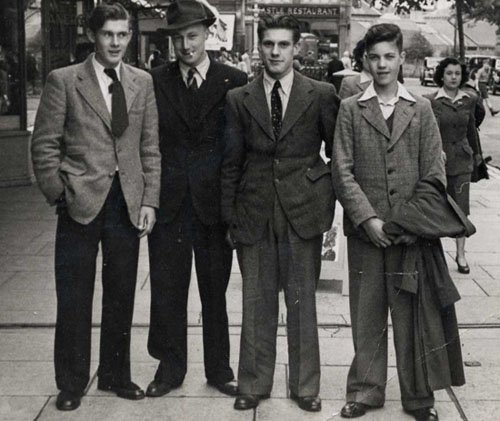
Tailored for success; that tiny shift means a lot!
My father regaled in the fact that when he was a young man in the 1950’s getting your suit tailored was a rite of passage, no young man wanted to be seen out and about without a tailored suit. He also recalled the shame of his De-mob suit after leaving conscription. My Mother also quipped in that even the hoodlums wore suits so it was harder to know who to trust!
Today however in a world of brand names it isn’t just the number on the label of our clothes that makes a difference.
We have all had one or more items of clothing that we have always felt confident wearing. This can be due to the colour or the wonderful memory attached to the time and event when we were wearing the outfit. What was also a factor and you probably overlooked as many of us do is the way the garment was tailored.
So why is tailoring so important to us when considering what clothes to buy in the shops today?
Until the early 1900’s there were no ready-to-wear clothes available, and all garments were either made by hand at home, or by a tailor or seamstress if you could afford it. It was only with the introduction of modern style sewing machines. This then enabled “off the peg” or “ready to wear” clothing, due to their ability to provide standardized garments, coupled with a high turnover.

This enabled designers, some of whom were trained as tailors, to be creative with fabrics, colours and textures, and to sell their collections to the more wealthy. The clothes that you see on the catwalk started as conceptual pieces, designed to be unique, controversial, desirable and inspirational.
When it comes to translating this to something that can be worn in ‘real-life’, many designers rely on the skills of a tailor to change their initial drawings into a real piece of clothing, even if that item of clothing still seems impractical to us. It doesn’t take long for simplified versions of these unique garments to find their way onto the high street, and they then often develop a following as the latest trend and ‘must have’ item.
Today, having our clothes made-to-measure is a luxury that most people can’t afford. We take for granted the fact that we have a high street and internet full of shops to choose from, with ready to wear clothes, and it is now generally only the rich who would employ a tailor. However, we do need to be mindful of the fact that we all have a different size, shape, height, and colouring, and that not all of the latest trendy items are made to suit us. Every person is individual, and with the decline in tailoring, we have lost the ability to dress to flatter our individual figure, colouring and shape. Shopping for clothes can be a minefield unless you know which styles will flatter and empower you, and make you look fantastic, and feel both comfortable and confident.
Tailored also means going with the flow, now the flow could mean your ever expanding waistline or any aspect of your business:
In a world becoming more granular, heterogeneous, uncertain and dynamic across markets and regions, the strategic choices companies make have also become more fluid and more contextual to each specific market. For example, while consumer goods companies previously leveraged the power of global brands without significantly tailoring their commercial strategy and associated operating model, the increasing heterogeneity of markets demands more flexible operating models that cater to different contexts.
In fact, many have not yet fully embraced the need to adjust their operating model to the mature vs. emerging world. For example:
- While most companies expect more than half of their growth potential to come from emerging markets, only a single digit share of their talent is located there.
- While the Asian, and specifically Chinese, consumer has very clear demands with respect to many products, only a few consumer goods companies innovate in and for China – a missed opportunity.
- While emerging markets exhibit a growing middle class that requires a tailored and an original go-to-market approach, most commercial strategies are still developed in the West.
The heterogeneous market landscape, shaped by a dichotomy of growth in emerging markets and stagnation (but still significant size and margin) in mature markets, needs a more tailored approach. This is often achieved by applying dual operating models, i.e., organizational choices that differ for different parts of the business and cater to the market context at hand. Frequently, these choices differ across the many imperatives of an operating model, such as structure, talent and decision making.
We are business people and Tailors of repute in the heart of Bangkok city. We are expert in colour and style and our passion is to enable you to grow with confidence and develop your own unique flavour and change when the time is right remember the only reason rivers flow is because they move around the hard rock and they have patience, there is nothing more powerful that consistency!


